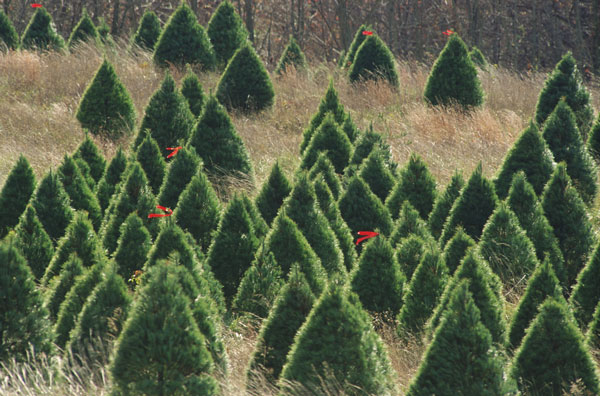
With the Christmas holiday closing in and many of those hard-earned farm dollars going out to purchase everything from gifts and home decorations to specialty food products for special holiday meals, many are thinking about ways to diversify incomes to help pay for the annual celebration.
Thoughts of warm, comfortable times at the holiday dinner table or sitting before the fireplace with family make lasting memories for most rural Americans. But the burden of rising holiday spending and the prospect of a slight decline in farm income have many concerned about keeping their heads above water.
Complicating things is the latest prognosis for farm income this year, calling for the probability of a slight drop. Some economists say lower crop prices, increases in input costs and a wavering futures market are combining to challenge farm income in late 2014. Whether year-end farm income numbers are a little better or a little worse than predicted, most farmers would agree opportunities for non-traditional farm income would be a welcome development this year or any year.
For the latest on southwest agriculture, please check out Southwest Farm Press Daily and receive the latest news right to your inbox.
Non-traditional farm income might include the addition of specialty crops, direct farm-to-market sales, income from hunting leases, agri-tourism operations, or other options unique to agriculture.
Regardless of the new enterprise, careful thought and planning will be required. Agricultural consultants warn that farm diversification is not guaranteed to boost your farming business and can be a complex process. But it can be rewarding. Careful planning and well-thought out investments in income opportunities have the potential of providing substantially to augment traditional farm income. Even activities that may at first seem unlikely to fit your operation and location may provide more opportunity than you imagine.
Such was the case for Bill and Kaye Walton. After retiring in 1984 the Waltons decided to grow Christmas trees –in Texas. They sold their first planted trees on their Elgin tree farm in 1987, and within four years had developed a loyal following of buyers. In 2003, they sold the farm to daughter Twyla and her husband Marc, who have kept the farm operating. In fact, they have diversified by adding a fall pumpkin festival and most recently a Christmas cottage shop. Visitors can enjoy hayrides and festivals during special times of the year.
This is not the only Christmas tree farm in Texas. Over 60 such tree farms were in operation last year across the state and that number is growing.
Cottage industries
But producing cottage food products or staging fall festivals may not be of interest to many farming families who rarely have time to develop activities involving heavy traffic from the public. Liability considerations and potential disruptive of traditional farming operations may discourage some farmers.
High-profile operations such as tree farms and pumpkin patches are not the only alternatives for diversifying farm income. Some Texas ranchers are turning lemons into lemonade by taking advantage of what many consider a major challenge.
A growing number of rural property owners have been battling an escalating feral swine problem. Texas is home to the largest number of wild swine, a problem that costs farmers and ranchers millions of dollars in damages every year.
From crop losses, fence damage, contamination of water sources and the potential for the spread of disease, farmers and ranchers are concerned about the growing costs of dealing with feral swine.
As reported in Southwest Farm Press last year, in spite of all the well deserved bad press feral swine have accumulated in recent times, two reasons illustrate why a growing number of Texans view the wild pigs in a more positive light. The first would be those who either enjoy hunting the creatures themselves or are charging others to hunt them on their property.
Some exotic hunting ranches in Texas are charging as much as $1,000 to target and shoot a large wild boar. On the low end, hunters pay around $120 to hunt large wild hogs on hunting leases. In addition to helping to control feral swine populations, many farmers generate income they otherwise would not have earned.
Income diversity on the farm isn't for everyone, but as crop prices slide and input costs soar, more and more farm families are looking at other opportunities to generate non-traditional income. Pecan trees, pick-your-own specialty crops, pumpkin patches and hunting leases may be the tip of the iceberg. For more information about ideas to help you generate non-traditional farm income, visit with your farm consultant or county agent.
About the Author(s)
You May Also Like




